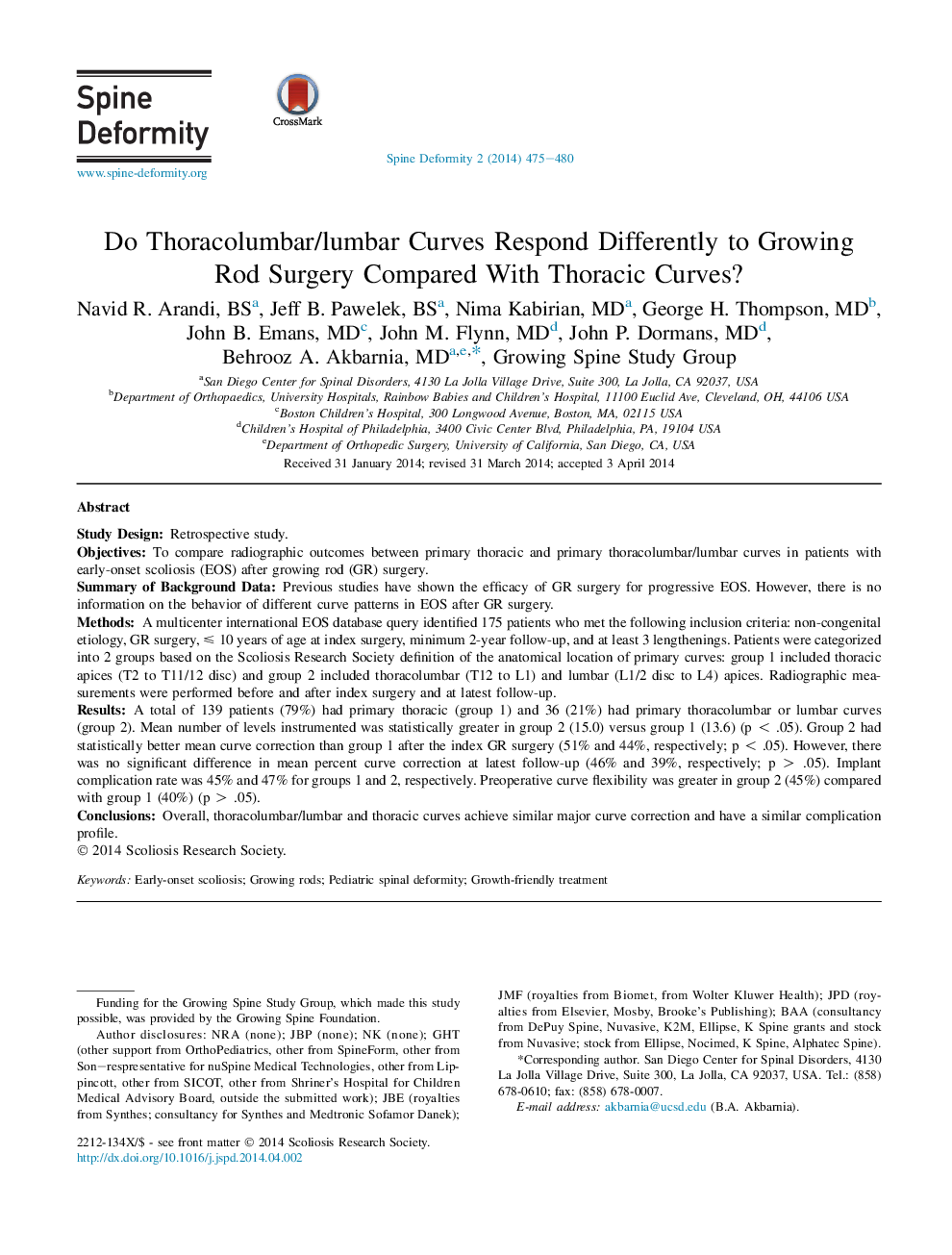| کد مقاله | کد نشریه | سال انتشار | مقاله انگلیسی | نسخه تمام متن |
|---|---|---|---|---|
| 4095612 | 1268542 | 2014 | 6 صفحه PDF | دانلود رایگان |
Study DesignRetrospective study.ObjectivesTo compare radiographic outcomes between primary thoracic and primary thoracolumbar/lumbar curves in patients with early-onset scoliosis (EOS) after growing rod (GR) surgery.Summary of Background DataPrevious studies have shown the efficacy of GR surgery for progressive EOS. However, there is no information on the behavior of different curve patterns in EOS after GR surgery.MethodsA multicenter international EOS database query identified 175 patients who met the following inclusion criteria: non-congenital etiology, GR surgery, ≤ 10 years of age at index surgery, minimum 2-year follow-up, and at least 3 lengthenings. Patients were categorized into 2 groups based on the Scoliosis Research Society definition of the anatomical location of primary curves: group 1 included thoracic apices (T2 to T11/12 disc) and group 2 included thoracolumbar (T12 to L1) and lumbar (L1/2 disc to L4) apices. Radiographic measurements were performed before and after index surgery and at latest follow-up.ResultsA total of 139 patients (79%) had primary thoracic (group 1) and 36 (21%) had primary thoracolumbar or lumbar curves (group 2). Mean number of levels instrumented was statistically greater in group 2 (15.0) versus group 1 (13.6) (p < .05). Group 2 had statistically better mean curve correction than group 1 after the index GR surgery (51% and 44%, respectively; p < .05). However, there was no significant difference in mean percent curve correction at latest follow-up (46% and 39%, respectively; p > .05). Implant complication rate was 45% and 47% for groups 1 and 2, respectively. Preoperative curve flexibility was greater in group 2 (45%) compared with group 1 (40%) (p > .05).ConclusionsOverall, thoracolumbar/lumbar and thoracic curves achieve similar major curve correction and have a similar complication profile.
Journal: Spine Deformity - Volume 2, Issue 6, November 2014, Pages 475–480
